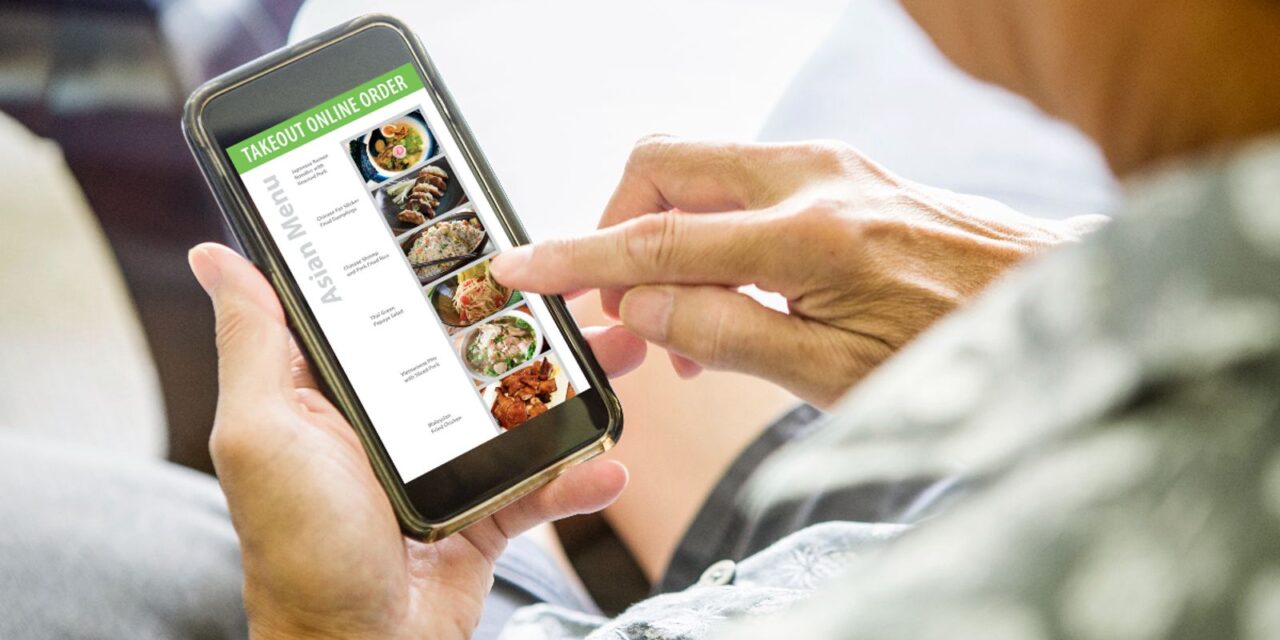Ordering takeout and delivery convenience food from an online Asian restaurant delivery meal from a smart phone. YinYang via Getty Images
Jessica Loder|Source: www.cstoredive.com, August 2023
Over 70% of respondents to a Tillster survey expect to earn or use rewards when ordering at an in-store kiosk, and more than half want to use them when ordering online.
As c-stores continue to take a page out of the QSR playbook when developing their food programs, they may want to consider what restaurant customers like — and hate — about ordering food in stores and online.
A recent survey from ordering technology firm Tillster asked patrons of quick service, fast-casual and casual restaurants about what they like and don’t like about those processes. It surveyed more than 1,000 people, asking questions about digital ordering, in-store kiosks, delivery, pickup and more.
Below are some of the insights that could help shape how convenience retailers approach their digital food-ordering footprints.
The importance of personalization and loyalty
The majority of respondents want to earn and use their loyalty points when ordering food, with 71% saying they expect to be able to use their rewards account when ordering at an in-store kiosk. More than half said they would use a company’s mobile platform or website to tie loyalty in with their delivery or pickup order, and 39% said they’d choose those digital channels over marketplace apps to use loyalty programs.
Making it easy to connect loyalty accounts to food orders is proving to be a win-win for convenience retailers. Not only will it cater to their most loyal customers, but on average, loyalty members spend about 38% more than other customers annually at c-stores, according to Paytronix’s 2022 loyalty survey.
Deeper personalization
A whopping 92% of respondents said they expect some sort of personalization from restaurants, and a third say it’s important that the ordering experience is tailored based on past orders or preferences.
Kiosk usage
The survey found that 42% of consumers had used a kiosk to order food in the past, and 44% said they plan to use one in the next three months. Top reasons for doing so include that they don’t feel rushed, they can explore more of the menu or easily customize orders, and that it’s quicker and more convenient.

Kiosks aren’t yet a widely used technology, however, with the majority of respondents saying they only use them occasionally. A little more than half said they’d use kiosks more often if lines were shorter, while nearly half said special offers would entice them to use kiosks more often.
The main thing retailers need to do is make sure the kiosks’ options are comprehensive, since over three-fourths of consumers “expect to be able to do everything at a kiosk they could do at the counter,” the report said.
The pros and cons of company-owned digital channels
It’s easy to understand why many customers rely on options like DoorDash or Grubhub. A hungry consumer can log into one place, see what piques their interest and easily order from multiple spots — including in the same order.
Still, 71% of customers said they prefer to order directly from the company website or mobile app.
“Our data reveals a noteworthy trend,” the report noted. “Consumers largely prefer to use a restaurant’s owned channels over third-party solutions, and this preference is growing year over year.”
As the report noted, using loyalty programs is one major factor, but respondents also said retailer-owned channels are attractive because they’re less expensive.
C-stores’ digital ordering capabilities vary widely. Some companies don’t allow any sort of digital ordering at all, while others only engage with third-party delivery providers. Some of the largest companies, like 7-Eleven, do it all. In addition to being available on popular marketplaces, 7-Eleven also has its own delivery app, 7Now.
Price and convenience can often stand at odds with each other. The survey found 47% of consumers had abandoned a delivery order because of the price.
Curbside has its place
Pickup has been gaining favor with U.S. consumers, even as delivery numbers pulled back a little amid an uncertain economy.
More than half of consumers in Tillster’s survey said they prefer pickup because it’s faster. Additionally, about 47% of respondents said they liked pickup because the food is still hot or because it’s cheaper than delivery.
Many c-store chains are already experimenting with curbside. For instance, Rutter’s added online food ordering in March, specifically allowing customers to place orders for curbside pickup.
Tillster pointed out that however customers engage with a company, the most important thing is that the experience is easy and rewarding.
“Whether diners interact with a brand digitally or in person, they expect a seamless and efficient experience that is tailored to their preferences and awards them for their loyalty,” the report suggested.

